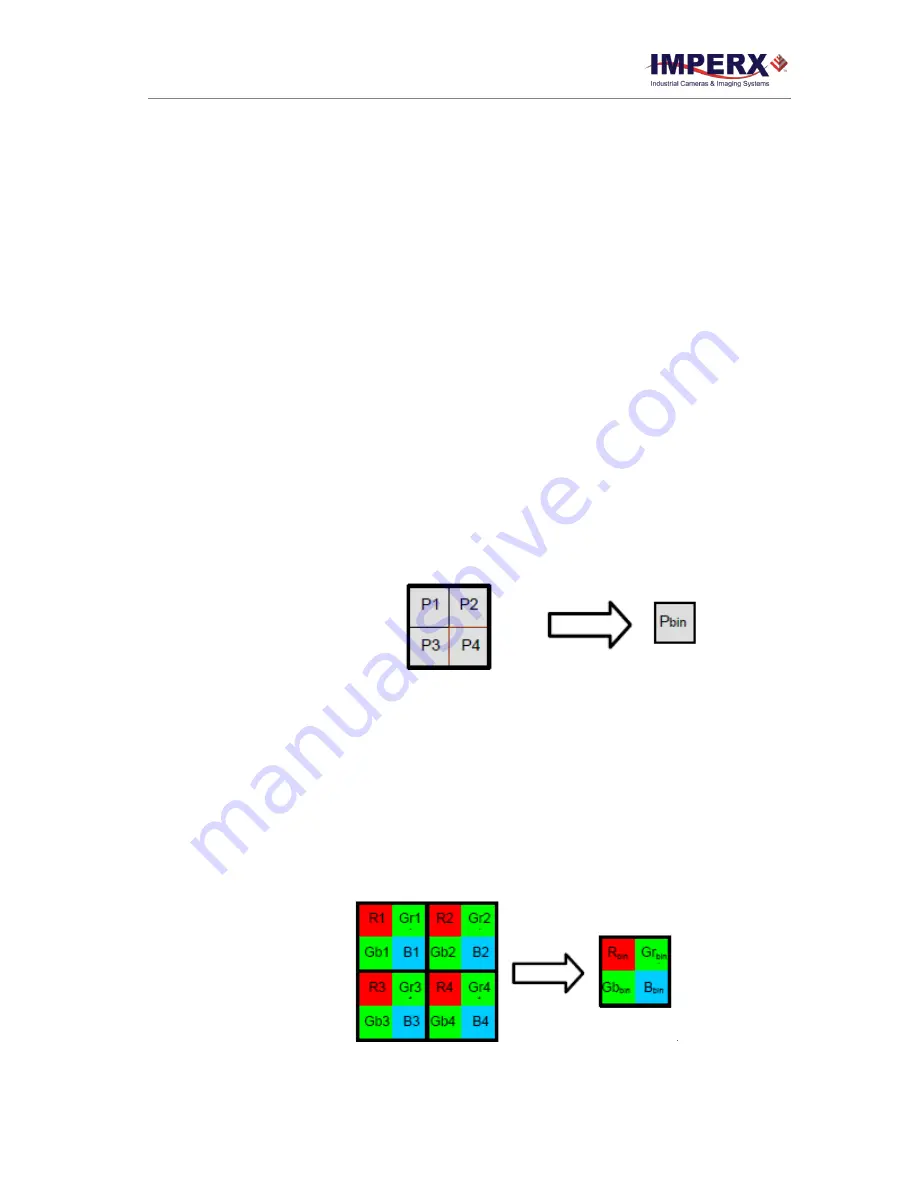
Cheetah KAC Camera User Manual | Camera Link (CLF) Interface
October 1, 2019
Page
91
of
135
Rev 7.2
5.6 Subsampling
5.6.1 Pixel Averaging
The principal objective of the averaging function is to reduce the image resolution with
better final image quality than a sub-sampling function. Sub-sampling as opposed to
averaging has the advantage of increasing the output frame rate by reducing the number
of rows readout, but also introduces aliasing in the final image. Pixel averaging reduces
the output resolution by averaging several pixels together and has the advantage of
reducing aliasing and reducing noise which increases SNR. Averaging decimation,
however, does not increase output frame rate.
It is possible to apply both averaging and sub-sampling decimation simultaneously to gain
both improvements in frame rate and improvements in SNR while minimizing aliasing.
The camera offers a 4:1 (read as “four into one”) and a 9:1 (nine into one) averaging
function, compatible with both monochrome and color (Bayer) cameras. Averaging four
pixels together reduces the temporal noise and increasing sensitivity by a factor of 2,
while averaging 9 pixels together reduces the noise by a factor of 3.
The graphic below illustrates the concept of 4:1 averaging for a monochrome image
sensor. The values of pixels P1, P2, P3 and P4 are summed together arithmetically and the
result is divided by 4 to achieve a pure arithmetic average of the 4 adjacent pixels.
Figure 50: Monochrome pixel averaging.
Color pixel averaging works in a similar manner, but like color pixels are aggregated to
maintain the Bayer pattern and to allow the standard Bayer interpolation color processing
algorithms to be used. 4:1 color pixel averaging is described in the following figure. As
shown, red pixels (R1, R2, R3 and R4) are aggregated together and the result is divided by
4 to create an average red pixel value. Likewise, Green (GR1, GR2, GR3 and GR4) are
summed together and the result divided by 4 to generate the green pixel in the red-green
pixel row. Green pixels in the blue-green row are similarly processed along with the Blue
pixels. The result of these operations is to preserve the Bayer pattern while averaging like
color pixels to reduce the output resolution while increasing SNR.
Figure 51: Principle of 4:1 averaging for Bayer color filter pattern.






























